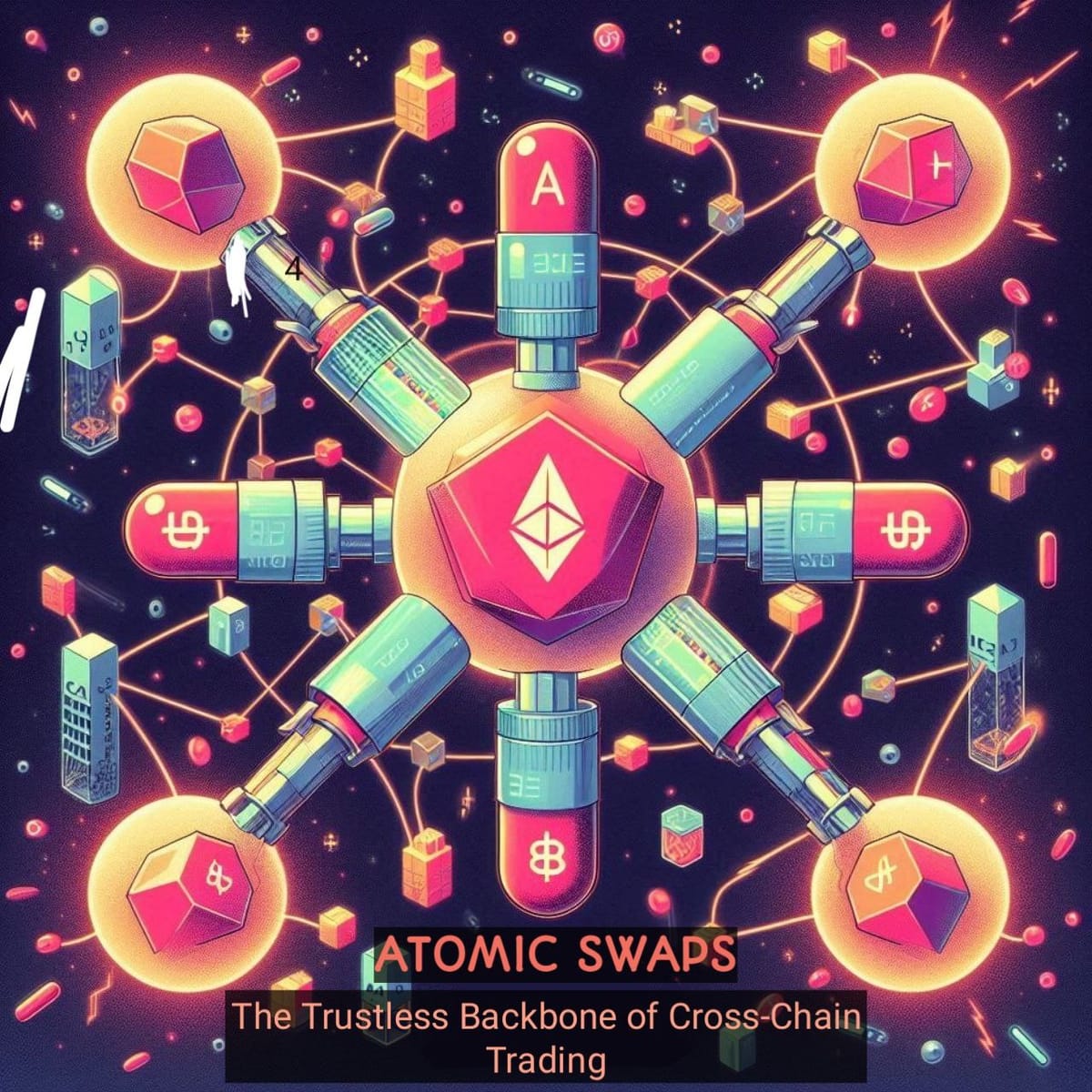Atomic Swaps in Mitosis: The Trustless Backbone of Cross-Chain Trading

What Are Atomic Swaps?
Atomic swaps are cryptographic protocols that allow two parties to exchange tokens across different blockchains without intermediaries. The "atomic" property means the transaction either:
✅ Completes entirely (both chains update)
❌ Fails entirely (no partial execution)
🔍 Key Property: No user funds are ever in escrow – eliminating bridge/hot wallet risks.
Why Mitosis Chose Atomic Swaps Over Bridges
The Bridge Problem
| Risk | Bridges | Mitosis (Atomic Swaps) |
|---|---|---|
| Custodial Risk | High (multisig keys) | None |
| Liquidity Frag | Wrapped assets | Native transfers |
| Settlement Time | 10min-24hr | <15 sec |
Mitosis eliminates $2.1B in bridge attack vectors (2023 Chainalysis Data)
How Mitosis Enhances Atomic Swaps
- Multi-Party Computation (MPC) Coordination
- Validators co-sign swap conditions without any single party controlling funds
- Threshold signatures ensure no single point of failure
- Funds are locked until both chains confirm secret revelation
Cross-Chain HTLCs (Hashed Timelock Contracts)
// Simplified Mitosis HTLC
contract AtomicSwap {
function lock(bytes32 secretHash, uint expiration) {
require(msg.value > 0);
hashes[msg.sender] = secretHash;
expirations[msg.sender] = expiration;
}
function redeem(bytes32 secret) {
require(sha256(secret) == hashes[msg.sender]);
payable(msg.sender).transfer(address(this).balance);
}
}
Step-by-Step: How a Mitosis Atomic Swap Works
Scenario: Alice swaps 1 ETH (Arbitrum) for SOL (Solana)
- Initiation
- Alice’s wallet generates a preimage secret → hashes it
- Mitosis validators verify liquidity on both chains
- Lock Phase
- ETH is locked in Arbitrum HTLC with hash
H - Validators signal Solana HTLC to reserve equivalent SOL
- ETH is locked in Arbitrum HTLC with hash
- Execution
- Alice reveals
secretto claim SOL on Solana - Validators propagate
secretto unlock ETH on Arbitrum
- Alice reveals
- Completion
- If secret isn’t revealed within 12 blocks (~1 min), funds auto-return
Advantages Over Traditional Atomic Swaps
1. No On-Chain Orderbooks
- Traditional swaps require:
- Matching counterparties
- Shared hash time windows
- Mitosis solves this via:
- Liquidity pool backing (always available)
- Adaptive timelocks (adjusts per chain speed)
2. Cross-Chain Gas Optimization
- Mitosis batches swaps to:
- Pay gas in the chain’s native token
- Route through lowest-fee paths
3. Fraud Proofs + Slashing
- Validators must stake MITO tokens
- False executions trigger:
- Automatic reversal
- Validator stake slashing
Real-World Use Cases
For Traders
- True Cross-Chain Arbitrage: Exploit price differences natively
- Privacy-Preserving Swaps: No CEX/KYC requirements
For Institutions
- OCC-Compliant Transfers: Auditable cryptographic trails
- Multi-Chain Treasury Management: Move funds without bridge exposure
For Developers
// Integrating Mitosis Swaps
const tx = await mitosis.initiateSwap({
fromChain: 'arbitrum',
toChain: 'solana',
assetIn: 'ETH',
assetOut: 'SOL',
amount: '1'
});
Challenges & Mitigations
| Challenge | Mitosis Solution |
|---|---|
| Chain Reorgs | 12-block confirmations |
| Frontrunning | Encrypted secret propagation |
| Liquidity Imbalance | Dynamic pricing algorithms |
The Future: Atomic Swaps 2.0
- Interchain Accounts (ICA) Integration
- Swaps triggering actions (e.g., swap ETH→SOL → stake SOL automatically)
- ZK-Proof Secret Reveals
- Hide swap details until execution
- MEV-Resistant Routing
- Private transaction pools
How to Experience It
- Testnet Demo: Try a Live Swap
- Track Swaps: Cross-Chain Explorer
- Build: API Docs
Why This Matters
Mitosis’ atomic swap implementation isn’t just a feature – it’s a new paradigm where:
- Users regain true self-custody in cross-chain trades
- Liquidity becomes chain-agnostic
- Security scales with cryptography, not collateral

Comments ()